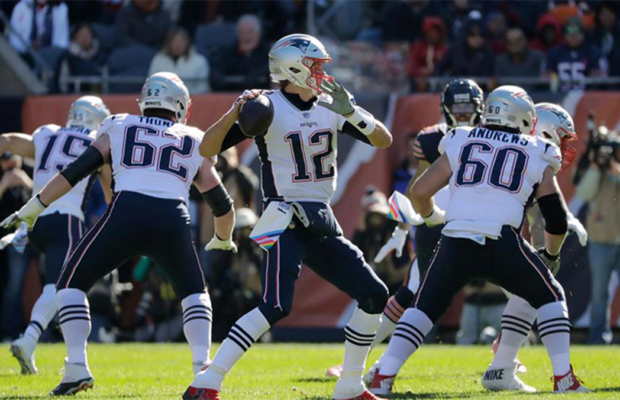The anatomy of an opening drive

By Bobby Peters
The New England Patriots are the gold standard of the NFL. Bill Belichick and his staff put together sound game plans week after week on offense, defense and special teams throughout the season.
The Patriots opening drive against the Bears in Week 7 is an example of a well-planned opening drive. The Chicago Bears defense, led by Khalil Mack, had started the season off with a vengeance and presented a legitimate challenge to the Patriots.
Bill Belichick and Josh McDaniels identified the pass rush, particularly Khalil Mack, as the driving force for the Bears defense. The Patriots essentially rendered him useless by design in their first drive.
On the first play of the opening drive, the Patriots call a quick draw from under center. This action allows the draw to act as more of a downhill run as opposed to a slower developing draw from shotgun. The tackles block out on both Mack and Leonard Floyd, the Bears top pass rushers. The video below shows the play:
The pump fake from Brady and pass set from the offensive line causes the defense to hesitate, and they cannot flow as fast to the run action. The play was a safe first down call.
Both Roquan Smith and Leonard Floyd have a chance to make a play on Sony Michel. Smith takes a bad angle and Floyd pulls up.
The next two plays are screen calls to the running back. On both occasions, the tackles will pass set and stay on Mack and Floyd, while the guards and center will release off of the slower interior lineman (Hicks and Goldman) to get down field. The videos below show the two plays:
On both occasions, the releasing offensive lineman are able to get to the second level and get bodies on the bears inside linebackers. This gives Michel a lot of room to work with. The offensive tackles staying on Mack and Floyd help deter them from sniffing out the screen, as Mack has shown his ability to do this.
Unique run game schemes have been a staple in New England. The “wham” scheme is another great way to slow down and throw different looks at a defensive line. The play will leave either a 1-technique or a 3-technique to be blocked by a tight end or fullback coming from the outside. The defensive lineman will typically look inside for a “trap” or a “kick” block, which allows the tight end to surprise him. The video below shows the concept:
The Bears aptly call a “bear” front. Against this defense, the wham block will take place on the defensive tackle lined up just inside the offensive tackle. In this case, it is number 90 Jonathan Bullard. The Patriots block the concept well and hit the play for a solid gain.
To cap off the drive, the Patriots score the touchdown with a “shield slant” out of a trips bunch. This play was also the Amendola 2-point conversion in Super Bowl LI against the Philadelphia Eagles. The video below shows the play:
The play is executed to perfection. The spacing and timing allow Edelman to avoid the unblocked defenders. The other receivers do a nice job of blocking the defenders over them, and Edelman is able to slip in front of a peeling Mack. The outside corner is not able to wade through the traffic provided by the other receivers.
The entire drive consisted of either quick passes, draws or slow developing screens. These plays do not allow superior pass rushers to impact the game. This opening drive script is another example of strong game planning from the New England Patriots.
These lessons are not unique to NFL game planning. High school and college coaches can use these tactics to help out a struggling offensive line throughout against an aggressive defensive line.
Read the original story in USA Football by Bobby Peters